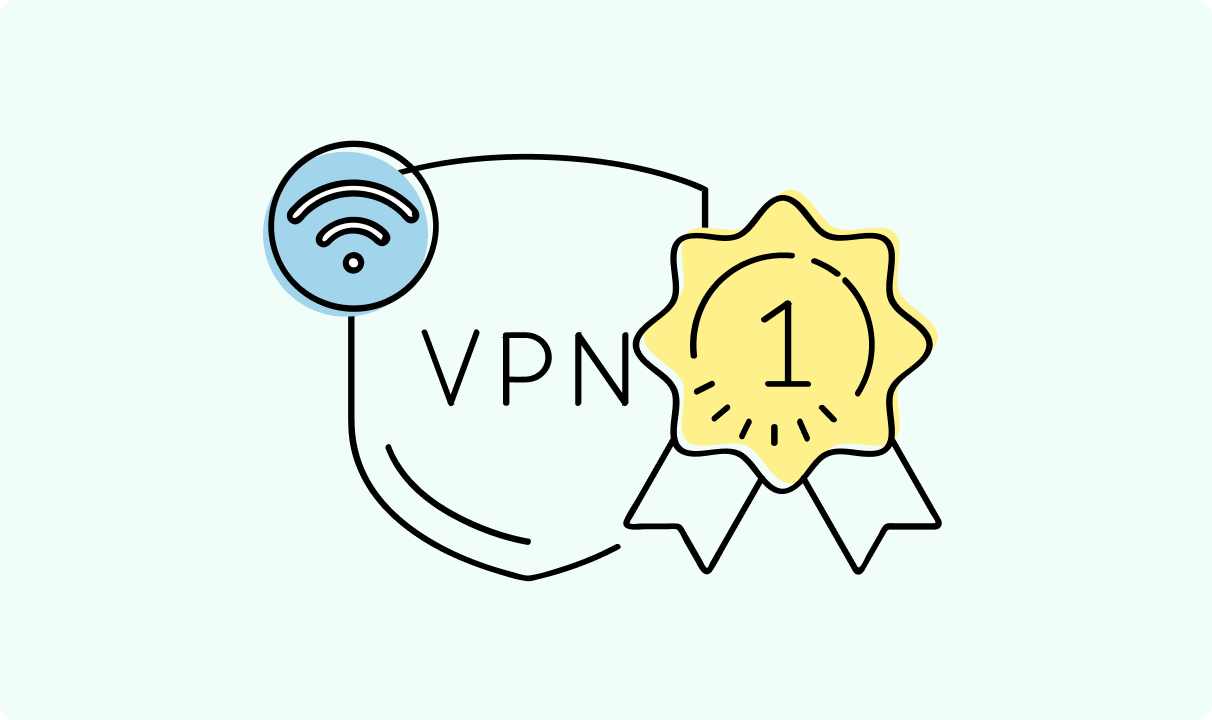What Is WireGuard? A Faster, Safer VPN Protocol Explained
Key takeaways:
- WireGuard VPN is a modern, fast, and simple VPN protocol that outperforms many older systems.
- It uses modern cryptography, small code, and has an easy setup process, which makes it secure and easy to audit.
- WireGuard is a great option for those who don’t need all the fancy features of older VPN versions and are looking for a faster, streamlined VPN version.
VPN protocols matter because they shape how your data moves through a VPN tunnel, how fast it goes, and how safe it stays. WireGuard is a modern alternative to OpenVPN and IKEv2.
Here we will explain what WireGuard is and why WireGuard VPN stands out. You’ll learn about its simplicity, speed, and why people often choose this protocol over others. We’ll also guide you through using it with CometVPN.

Guoda Šulcaitė
3 min read

What is WireGuard?
WireGuard protocol was created by Jason A. Donenfeld and released in 2015. The WireGuard VPN was initially born out of the idea to simplify and streamline the existing protocols and quickly made its way into mainstream use. Its codebase is small, compared to other protocols, only around 4,000 lines, all thanks to modern design and modern cryptography.
It runs within the Linux kernel and works on Windows, macOS, iOS, and Android. All those platforms support this VPN protocol natively, which results in fewer bugs and a smoother setup.
How WireGuard Works
WireGuard sets up a fast WireGuard tunnel using UDP transport, enabling faster performance. It uses the Noise protocol framework for a secure handshake and leverages strong cryptography like ChaCha20 and Poly1305.
Building a WireGuard tunnel uses a lightweight configuration process and connection setup. You use a configuration file which contains your private key, the other peers’ public keys, IPs, and endpoints. Once the private key and public keys are set, the connection is quick.
WireGuard Pros and Cons
Just like any other solution out there, WireGuard has its pros and cons. However, the pros seem to outweigh the cons, which makes it a desirable protocol for many.
Pros
- Speed. The WireGuard VPN boasts low latency and fast performance. It’s perfect for streaming, gaming, or establishing a VPN connection for browsing.
- Security. Built with modern cryptography, the small codebase reduces the occurrence of bugs and a small attack surface.
- Simplicity. The setup process is quick. All you need to do is get the private key, public keys, write a configuration file, and the setup is done.
Cons
- Static IPs. You get a fixed IP by default, which may affect privacy in some cases.
- No built-in NAT traversal. You may need to do manual tweaks or use external tools for VPN connections through firewalls or routers.
- Lacks legacy features. No TCP fallback, dynamic IP assignment, or advanced customization by default like some other VPN protocol setups.
Before you decide which protocol suits your needs best, make sure to weigh in the pros and cons of each.
WireGuard vs Other VPN Protocols
Feature | WireGuard | OpenVPN | IKEv2 |
|---|---|---|---|
| Speed | Very fast | Fast (TCP), very fast (UDP) | Fast |
| Security | Strong | Strong | Strong |
| Compatibility | Good | Excellent | Limited |
| Resource usage | Low memory/CPU | Higher | Moderate |
In general, you should use WireGuard VPN if you want speed and lightweight code. On the other hand, choose OpenVPN for older systems or deeper customization.
How to Use WireGuard with CometVPN
Step-by-Step Setup
Desktop and mobile
- Sign up to CometVPN.
- Download and install the CometVPN app.
- Go to “Settings”.
- Select WireGuard as your main protocol.
- Connect to a server.
Performance Tips
- Pick the nearest server for better speeds.
- Close apps you’re not using since they can hog your bandwidth or memory.
- Invest in a good internet connection, since a VPN won’t be able to go faster than your regular internet.
Troubleshooting
- Config errors. Check your WireGuard protocol format and ensure the values match.
- NAT problems. Open firewall ports or use fallback DNS.
- Handshake failures. Verify public keys and private key match between peers and server.
Final Thoughts
WireGuard delivers a smooth mix of speed, simplicity, and security. Its small size and use of new cryptography make auditing and maintenance easier. While it’s not as feature-heavy as OpenVPN, it doesn’t make that much of a difference since most users don’t need all the fancy features.
If you’re looking for a fast WireGuard VPN, try CometVPN’s offering. You’ll get a fast VPN connection, strong encryption, and easy setup with no technical hassle.
Frequently Asked Questions
Is WireGuard safe to use?
Yes, it uses strong cryptography with a tiny codebase, which makes it both secure and easier to check for bugs. Fewer lines of code also means less opportunity for vulnerabilities.
Can I use WireGuard on my phone?
Yes, it works on both iOS and Android. Just download the app, load your config file, and you’re good to go.
Is WireGuard faster than OpenVPN?
Yes, especially if OpenVPN is running on TCP. The WireGuard protocol uses UDP, which is lighter and quicker than OpenVPN’s setup. However, if you run OpenVPN on UDP, it also becomes faster.
Does WireGuard hide my IP address?
It does, but it doesn’t rotate it. When your VPN tunnel is active, websites and apps see the WireGuard server IP instead of your real one. But since the IP is static, it’s more prone to privacy issues in some cases.
Is WireGuard easy to set up?
With CometVPN, it’s super easy. All you need to do is sign up, choose a plan, download the CometVPN app, and find WireGuard in “Settings” to enable it..

Author
Guoda Šulcaitė
Growth Manager at CometVPN
Guoda is an all-round marketing professional with deep knowledge in the tech SaaS industry, particularly VPNs and proxies. She has worked on numerous projects and helped achieve impressive results through project management, content production, and SEO.
Related articles

4 min read
Best Residential VPN Providers in 2025
A Virtual Private Network (VPN) encrypts your traffic and hides your IP address. The way these functions are accomplished affects various aspects of your online privacy and security.
Here, we'll consider using residential IP addresses instead of those originating from a data center. A residential VPN has advantages compared to traditional ones, but there are some caveats. It all boils down to residential VPN providers.
The worst ones may even create more risks than benefits. We'll end this article with a list of the best residential VPN providers on the market.

Guoda Šulcaitė
4 min read
Ethernet vs Wi-Fi: Which One is Better?
Ethernet and Wi-Fi are the two main ways to connect your computer to the internet. While Wi-Fi has received significantly more attention in recent years, especially among consumers, due to its simplicity and flexibility, ethernet is still widely used in various other applications.
Even if Wi-Fi is significantly more popular, it isn’t strictly better. Both methods have their benefits and drawbacks. Wi-Fi’s popularity comes from its ease-of-use and flexibility, but an ethernet connection can be much more useful in certain scenarios.

Adomas Šulcas

5 min read
How to Change Chrome Proxy Settings: The Ultimate Guide
A proxy server is an easy alternative to a VPN that can perform most of the functions of the latter. It’s a server that stands between your device and the destination server, taking your connection requests and forwarding them in your name.
Destination servers in almost all cases see the proxy server as the originator of the request. As such, proxies are widely used in various, mostly business-related applications whenever privacy, security, location changing, and several other factors are at play.

Guoda Šulcaitė